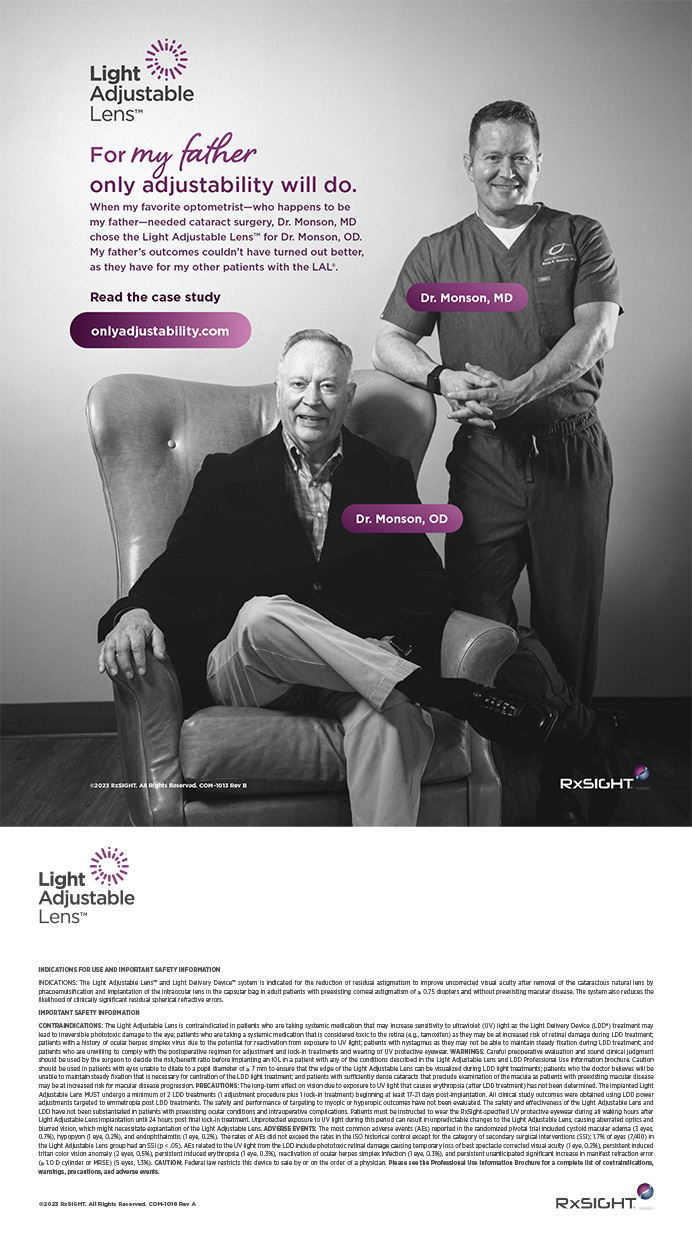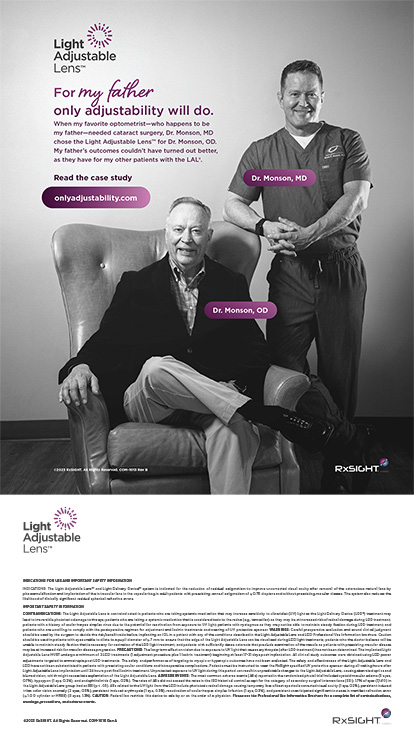What attracted you to medical practice and to ophthalmology?
I liked three things about ophthalmology: interacting with people, working with my hands, and using the technology. Ophthalmology in the early 1990s took a quantum leap, and I was at the cusp of it. I had the good fortune to choose a specialty that I loved right at the point of its exponential technological growth. No other specialty, arguably, blends skill, technology, and humanity so seamlessly. The feeling that I get being able to play even a little part in making a blind person to see again is incomparable. I am also able to perform surgery, conduct research, and teach, all in a field that I love. I am lucky to work in a large tertiary care institute where innovation is ranked very high, and I have been even more lucky to have a family that supports me all the way.
You have won several awards for surgical videos of complex cases. What is your secret?
Over the years, I have been fortunate enough to have produced/coproduced more than 30 international awardwinning videos, and many of them have also been featured as the editor's choice videos. Creating a high-quality surgical video is like working on a recipe with many essential ingredients. One needs a strong knowledge of the field, innovation, surgical skill, patience, creativity, dedication, and the ability to understand the audience.
What cutting-edge surgical techniques have you recently adopted, and which ones have had the most significant impact on your outcomes?
The glued endocapsular ring, which won an award at the 2012 annual meeting of the American Society of Cataract and Refractive Surgery, is a device/technique that I designed for subluxated cataracts/IOLs. It eliminates all of the short- and long-term suture-related complications such as erosion/degradation while improving the bag's stability intra- and postoperatively. It makes surgery easier and avoids cumbersome, complicated needle passes. Intraoperative adjustment of the IOL's centration is easy, unlike with sutured capsular tension rings/segments. Fibrin glue hermetically seals the flap over the exteriorized haptic.1 I am also excited about two new other new techniques that I recently developed: contact lens-assisted collagen cross-linking or CACXL for safely cross-linking thin corneas (http://video.healio.com/search/?search=co ntact+lens+assisted) and the single-stab trabeculectomy technique, which allows simpler, more effective, and less fibrogenic glaucoma filtering surgery (http://eyetube.net/?v=wogaz )
What is the greatest achievement of your professional career thus far?
The aforementioned sutureless glued fixation of an endocapsular ring is definitely my greatest achievement so far. Other highlights include the single stab incision frontalis sling surgery (for faster, easier surgery and enhanced cosmesis), anterior segment transplantation (using a bioprosthesis in patients with anterior staphyloma), and the turnaround and double-pass turnaround techniques (for successful completion of laser-assisted Intacs [Addition Technology Inc.] implantation in eyes with false channel dissection). Another discovery I would rank highly is my recognition of various types of Descemet detachments (DD); the clinicotomographic classification of them into rhegmatogenous DD, tractional DD, bullous DD, and complex DD; and the treatment algorithm depending on the type of DD. This is somewhat analogous to retinal detachment. Relaxing Descemetotomy and YAG/surgical Descemetopuncture are also techniques that I have described for use in select types of DD.4
What is a memorable international experience?
I felt very humbled to be the first person ever to receive the Golden Apple Award for the Challenging Cases Symposium in Cataract Surgery at the annual meeting of the American Society of Cataract and Refractive Surgery twice. Nominees present the management of their challenging case to a huge panel of acclaimed experts in the field and in front of an enormous audience that casts its vote. The award is a major recognition and stimulus. Receiving the John Henahan Award for Young Ophthalmologist from EuroTimes at the European Society of Cataract and Refractive Surgery 2011 annual meeting was another memorable experience. These awards make me more humble and, at the same time, more determined to continue on my journey toward greater challenges and more opportunities. As Sir Winston Churchill put it, “You know you will never get to the end of the journey. But this, so far from discouraging, only adds to the joy and glory of the climb.”
- Agarwal A, Jacob S, Agarwal A, et al. Glued intraocular lens scaffolding to create an artificial posterior capsule for nucleus removal in eyes with posterior capsule tear and insufficient iris and sulcus support. J Cataract Refract Surg. 2013;39(3):326-333.
- Jacob S. Corneal damage and posterior capsular rupture. In: Agarwal A, ed. Posterior Capsular Rupture. Thorofare, NJ: Slack; 2013.





